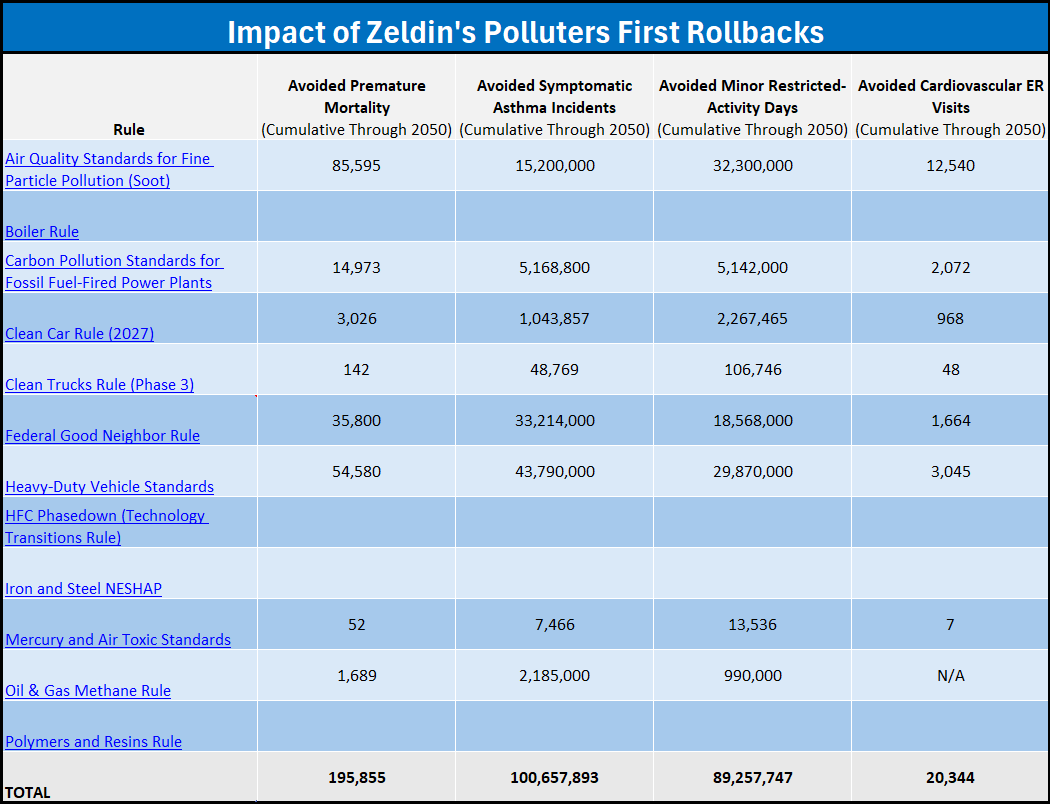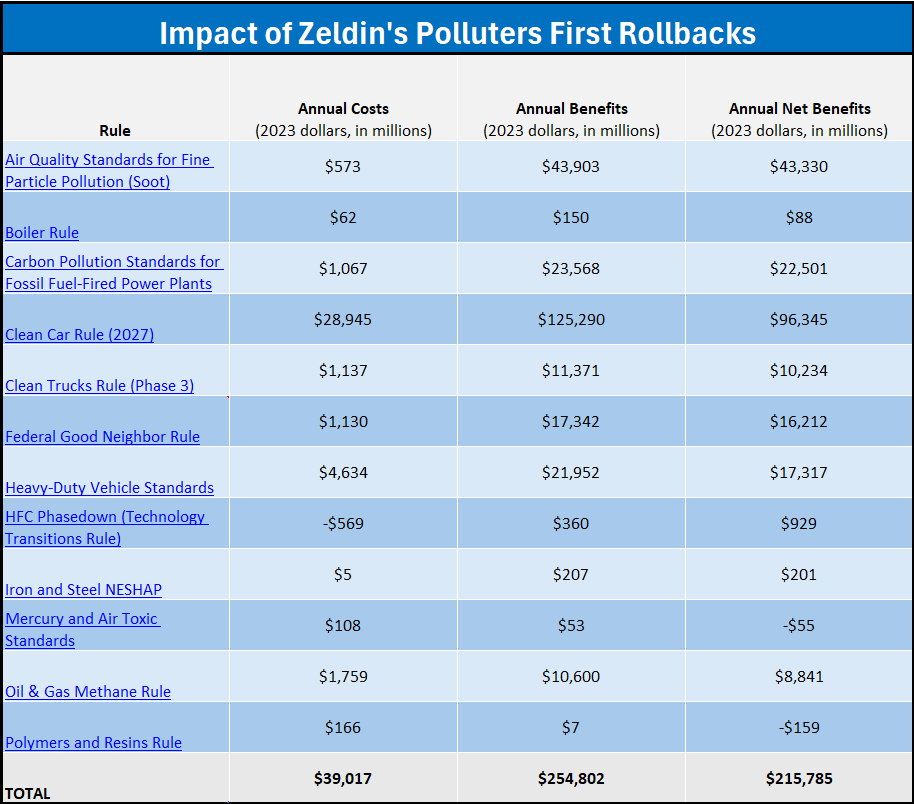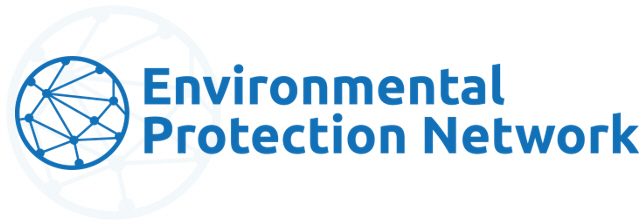EPA Administrator Lee Zeldin announced that EPA will attempt to roll back or eliminate 31 public health and environmental regulations, calling it:
“the greatest day of deregulation our nation has seen.”
Environmental Protection Network (EPN) analyzed 12 of these 31 rollbacks using data published by EPA for each of these rules. EPN concludes that the air pollution increases from Zeldin’s “Polluters First” agenda will:
- Lead to nearly 200,000 premature deaths through 2050. That’s the equivalent of 20 sports arenas filled with children, grandparents, moms, and dads who will live shorter, less healthy lives because of these rollbacks.
- Cause more than 10,000 asthma attacks every day throughout the United States, leading to missed school days, missed work days, and trips to the school nurse or the emergency room.
- Create six dollars in costs to the public for every dollar in cost relief to corporate polluters. The EPA rules that Zeldin seeks to erase create $254 billion in annual benefits for public health and the economy, compared to $39 billion in costs to regulated industry. These benefits come from avoided hospital and health care bills, the value of longer, healthier lives, and other benefits from rules issued under the Clean Air Act, Safe Drinking Water Act, and other landmark environmental laws.


POTENTIAL UNDERESTIMATES
These figures likely significantly underestimate the benefits of EPA’s regulatory updates for two reasons. First, this assessment focused on only a portion of the rollbacks, based on those rules that had the most significant monetized costs and benefits. These rules cover in particular major air pollution and climate rules issued by EPA during the prior administration.
Second, due to technical limitations, numerous health benefits are often left unquantified in the EPA regulatory assessments used for this analysis, including:
- Cancer, including the hazards of dangerous carcinogens such as benzene, formaldehyde, arsenic, and lead.
- Respiratory effects, including pulmonary function, non-asthma ER visits, and chronic diseases beyond bronchitis
- Nervous system effects, including autism, cognitive decline, and dementia
- Metabolic effects, such as diabetes
- Reproductive and developmental effects
- Decreased outdoor worker productivity
METHODOLOGY AND UNCERTAINTIES
The analysis uses estimated annualized values (EAVs) for total costs and benefits reported by EPA in each Regulatory Impact Analysis (RIA), at a 3% discount rate, adjusted to 2023 dollars using the GDP deflator.
The health incidence data is presented on a cumulative basis up to the year 2050 and is compiled using a combination of methods that reflect the differing ways in which the data is presented by the EPA across different RIAs.
More information on methodology can be found in EPN’s Breathing Easy report (2024).

